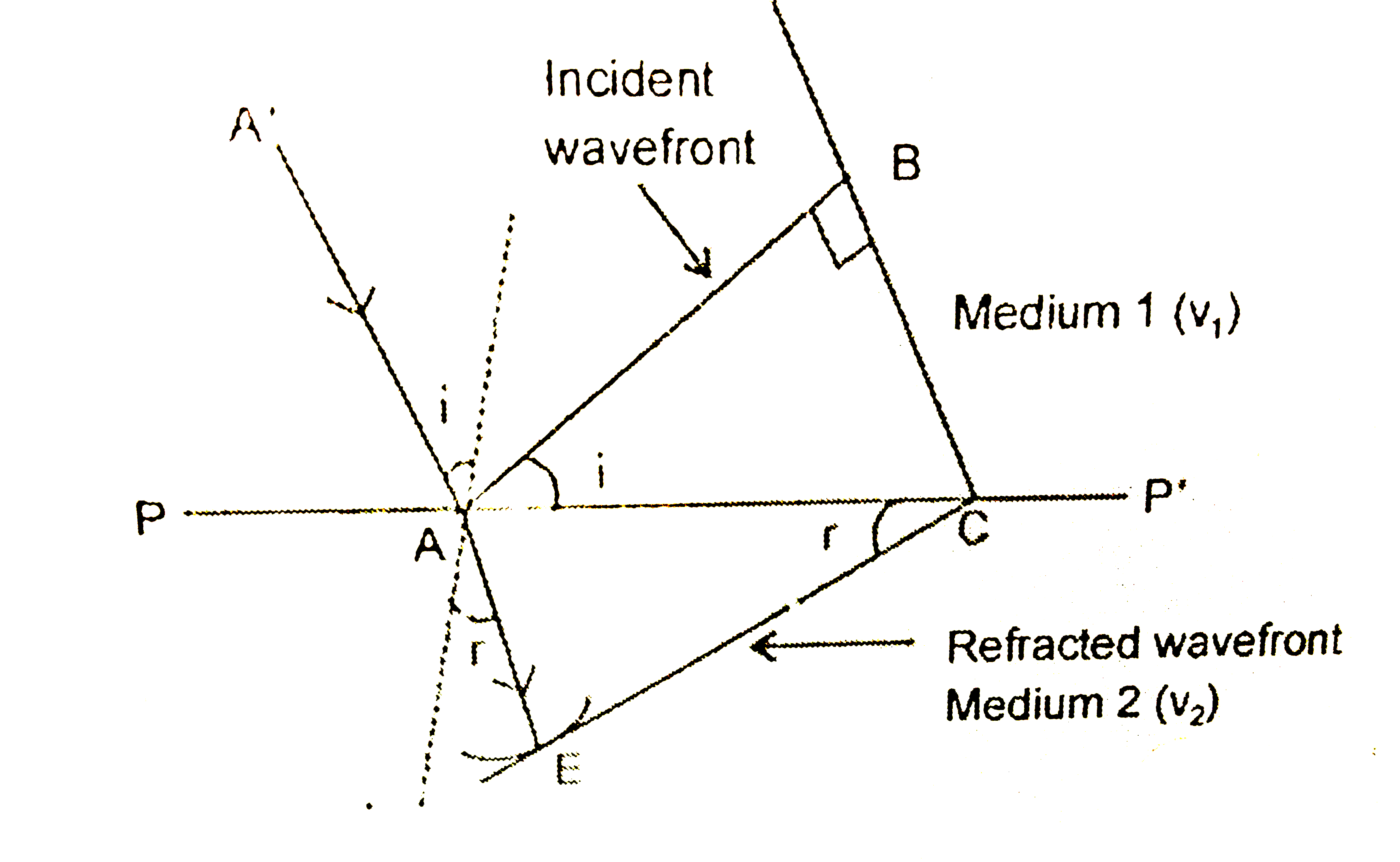Use Huygen's principle to show how a plane wavefront propagates from a denser to rarer medium. Hence verift snell's law of refreaction.

Step by step video & image solution for Use Huygen's principle to show how a plane wavefront propagates from a denser to rarer medium. Hence verift snell's law of refreaction. by Physics experts to help you in doubts & scoring excellent marks in Class 12 exams.
Updated on:21/07/2023Similar Questions
(a) State Huygen's principle . Using this principle draw a diagram to show how a plane wave front incident at the interface of the media gets refracted when it propagates from a rarer to a denser medium. Hence verify Snell's law of refraction.
(b) When monochromatic light travels from a rarer to a denser medium, explain the following, giving reasons-
(i) Is the frequency of reflected and refracted light same as the frequency of incident light?
(ii) Does the decrease in speed imply a reduction in the energy carried by light wave?
View SolutionUsing Huygen.s principle, verify Snell.s law of refraction of plane wave propagating from denser medium to rarer medium.
View SolutionHow is a wavefront defined? Using Huygen's construction , draw a figure showing the propagation of a plane wave refracting at a plane surface separating two media. Hence verify Snell's law of refraction.
View SolutionAnswer the following:
(a) What is a wave front? How does it propagate? Using Huygens' principle, explain reflection of a plane wavefront from a surface and verify the laws of reflection.
(b) A parallel beam of light of wavelength 500nm falls on a narrow slit and the resulting diffraction pattern is obtained on a screen 1m away. If the first minimum is formed at a distance of 2.5mm from the centre of screen, find the
(i) width of the slit, and
(ii) distance of first secondary maximum from the centre of the screen.
View SolutionA plane wavefront propagating from a rarer into a denser medium is incident at an angle of incidence i on a refracting surface. Draw a diagram showing incident wavefront and refracted wavefront . Hence verify Snell's laws of refraction.
View Solution(a) What are standing waves or stationary waves ?
(b) Show that when a transverse wave travels from a rarer to a denser medium it gets reflected with a phase change of πt. Also prove that wien a transverse wave travels from a denser to rarer medium it gets reflected from the surface separating the two media without any phase change.
View SolutionHuygen.s principle of secondary wavelets can be used to
a) deduce the laws of rectraction of light
b) deduce the laws of refraction of light
c) explain the transverse nature of light waves
d) predict the location of a wavefront as time passes
View Solution(a) Define a wavefront. Use Huygen' principle to shown diagrammatically the propagation of a plane wavefront from the intant t1=0 to later time t2.
(b) State briefly two features which can distinguish the characteristic features of an interference pattern from those observed in the diffraction pattern due a single slit.
View Solution(i) Define term wavefront. State Huygen.s principle.
(ii) consider a plane wavefront incident on a thin convex lens. Draw a proper diagram to show him the incident wavefront traverses throught the lens and after refraction focuses on the focal point of the lens, giving the shape of the emergent wavefront.
(iii) When light travels from a rarer to a denser medium, it loses speed. Does, this loss imply a reduction in energy carried by the light waves.
View SolutionA : If a wave moving in a rarer medium , gets reflected at the boundary of a denser medium , then it encounter a sudden change in phaso or π .
R : If a wave propagating in a denser medium , gets reflected from rarer medium , then there will be no abrupt phase change .
View Solution
